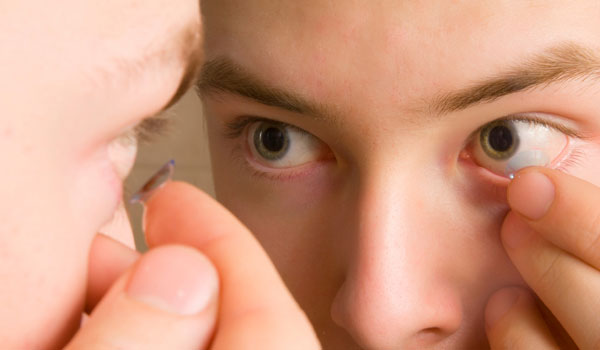
For many years, people with diabetes have had to test the level of glucose in their blood through a regular routine of uncomfortable needle pinpricks in their fingers. However this could all be about to change!
The University of Washington, in partnership with Microsoft, are in the process of engineering a contact lens design that will be able to test the blood sugar level of the wearer. If this project is successful and becomes available to the public, it could potentially revolutionise the way that people with diabetes feel about their condition. It could provide a much more convenient method of testing that would show changes more immediately.
How It Works
Diabetes is a condition where your body is unable to metabolise sugars effectively, which leads to a build up of glucose in your system. Historically this has always been tested through concentration of sugar levels in blood, but new research has shown that it can also be tested through tears.
Tears naturally form on the surface of the eye and act as a lubricant. The contact lens will continually monitor the levels of glucose in the tears of the wearer, and if it detects an increase in levels of glucose the colour of the contact lens will change to display this increase.
Lead researcher Dr Jun Hu describes it to work just ‘like pH paper in your high school chemistry lab’.
A Much More Convenient Option
Researchers believe that this will boost patient compliance with testing their own blood sugar levels, as it a much more convenient alternative to the finger pinprick test. It allows the wearer to go about their daily lives, and the lens colour change acts as a visual warning that there has been an increase in their glucose levels. This is a much more immediate effect than if they were to wait until their routine pinprick test.
The team have also anticipated a potential problem, which is that people won’t necessarily know that their eye has changed colour until they look in the mirror. To tackle this issue, they are also designing a mobile app that will calculate glucose levels from a snapshot of the eye on a camera phone.
This is currently only in the prototype phase, but has promise to change the lives of thousands of people across the world. It has already received significant media coverage and many positive responses from diabetics that would welcome the alternative testing method. The team of scientists working on the project have estimated that it should be available for public consumption in 3 years time.
Steph has a passionate interest in science, and particularly likes to keep up-to-date on all the latest technological developments. She blogs for Lenstore an ecommerce contact lens retailer.










Comments